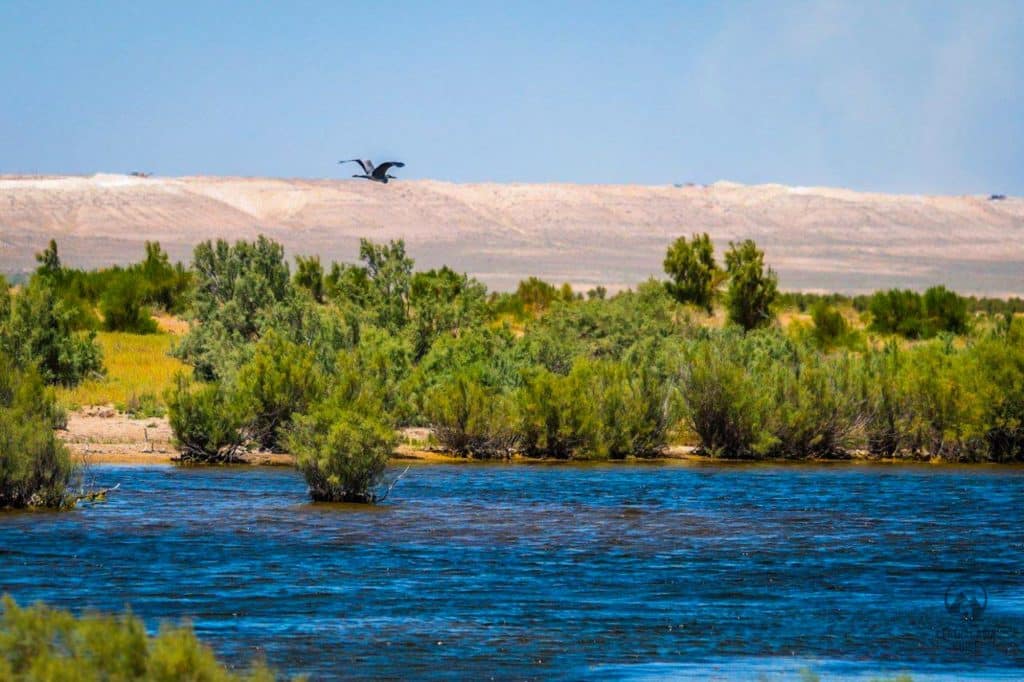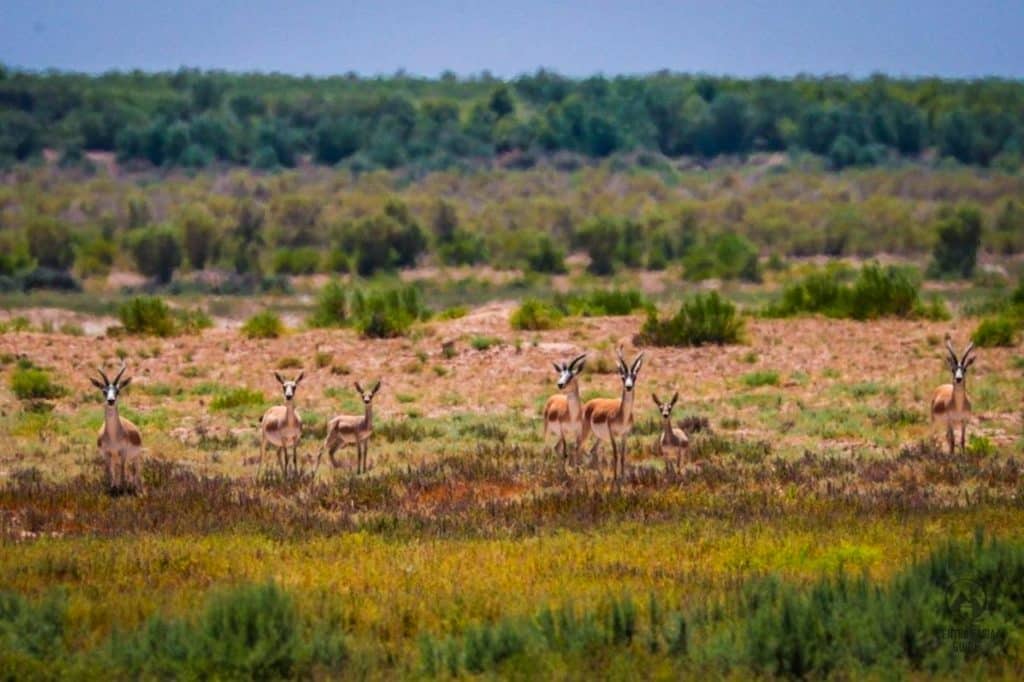Kyzylkum Desert
Kyzyl kum Desert
Kyzyl kum desert (Red sand or red desert in Uzbek) is the 15th largest desert in the world. We have not found a reason why it is called the red desert as the sand is mostly yellowish. Kyzylkum ranges roughly between the Amu Darya and Syr Darya rivers and is limited in the west by the remains of the Aral Sea (nowadays mostly Aralkum desert) and in the east by the Aydarkul lake, Nuratau mountains and the Bukhara oasis. Together with the Karakum desert, mostly in Turkmenistan, they form the Southern Central Asia desert.
Kyzyl Kum resides mostly in Uzbekistan, but a small part of it also reaches to the Kazakh side, occupying in total an area of about 300 000 square kilometers. It consists of a plain sloping down toward the northwest, with a number of isolated bare mountains rising up to 922 meters and several large enclosed basins. Even though mostly covered with sand ridges on which desert plants grow, the desert serves as a pasture for Karakul sheep, horses and camels, and there are several small oasis settlements.
The Kyzylkum desert and the vicinity contain a large number of sights and destinations, which are of interest to tourists. Though the desert of Kyzylkum might seem lifeless and boring at first sight, it is far from that. In particularly during the spring time, when the sand is covered with a carpet of poppies, tulips and blossoming shrubs and other peculiar desert vegetation, the whole desert is alive with numerous animals. Kyzyl Kum desert is best experienced during our Uzbekistan Tours, Turkmenistan Tours or Central Asia Tours.
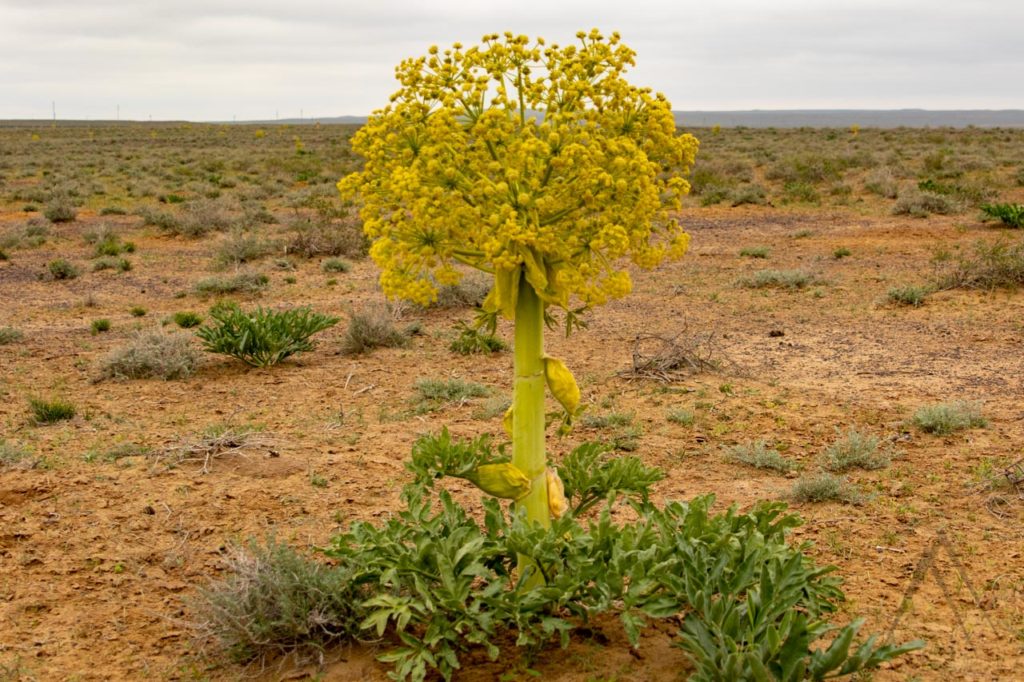

Kyzyl Kum sights
The most famous sights of the Kyzyl Kum are the Khorezm fortress ruins. In addition to them, there are some 20 meter high sand dunes at the center of Kyzyl Kum that can be reached with camels. There are also many many dried riverbeds, springs, salty lakes and geological formations like the Jarakuduk petrified forest, dinosaur fossils and even hot springs. A very good way to get a quick glimpse of the Kyzyl Kum desert is to travel by train from Bukhara to Khiva.
Other anthropological related sights include Petroglyphs of the Bukantau mountains and the several small, desolate desert villages in places with oases or other water sources, namely the Kulkuduk, Yangigazgan and Dongelek. Sultan Bobo Uvays’ shrine is surrounded by a vast cemetary in the mountain ridge near Amu Darya and several ancient Khorezm fortresses. Kyzyl kum can be visited easily with our Uzbekistan tours or Central Asia Tours.
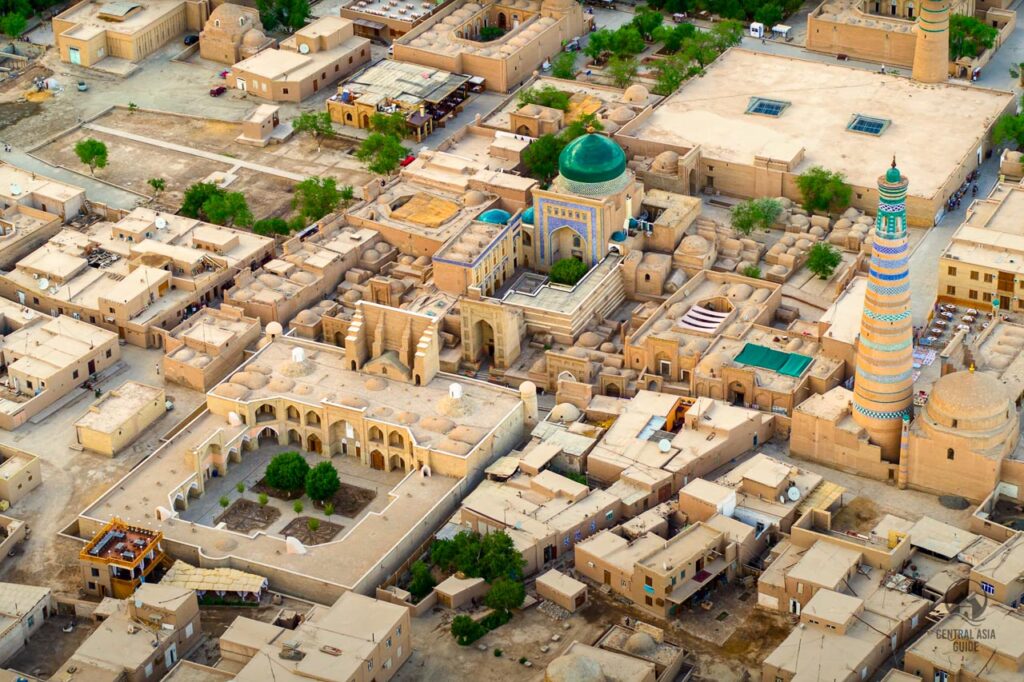
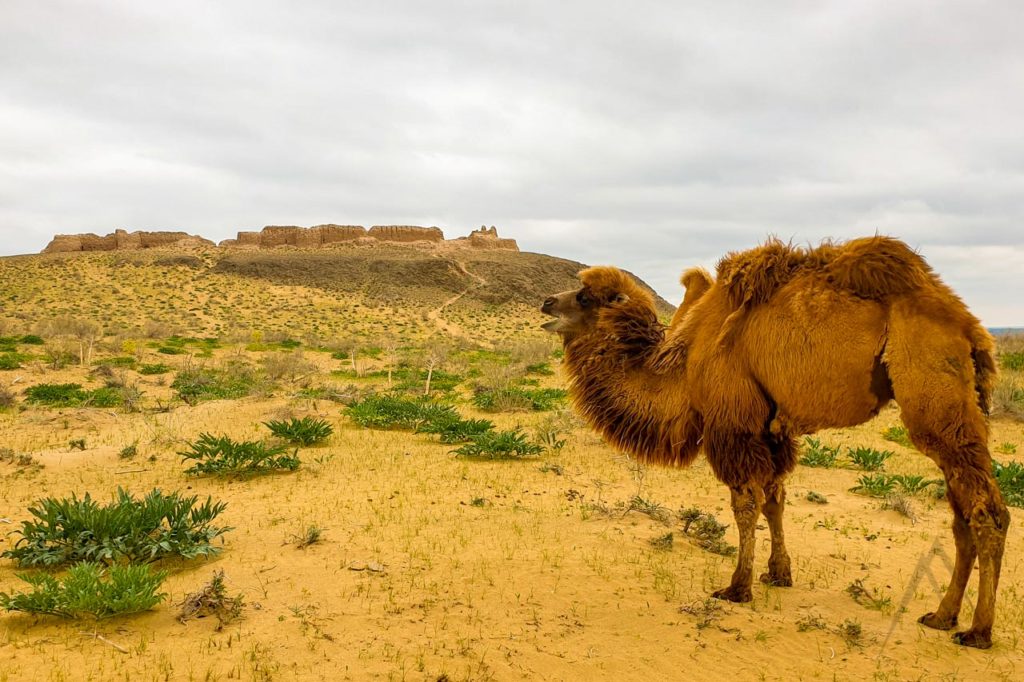
One can also consider the the Aral Sea nowadays more of as a desert site, especially together with the ship cemetery in Muynak, where there used to be a large fishing community by the former shoreline. Ustyurt plateu, mostly in the Kazakh side, is also bordering the Kyzyl Kum and can be combined to a visit, though the distances tend to be quite long in the area. Accommodation is often offered in the form of yurts in the numerous yurt villages around the Kyzyl Kum desert.
The Kyzylkum desert is a perfect place for jeep tours, car tours, rallies, bicycle tours, Bactrian camel rides and various types of nature tours with ornithological, botanical or other focuses. There are also a few interesting trekking, bicycle and horse routes in the mountains of Nuratau, Aktau and Karatau. Kyzylkum also borders the Khiva oasis area near the Amu Darya and the Karatau mountains.

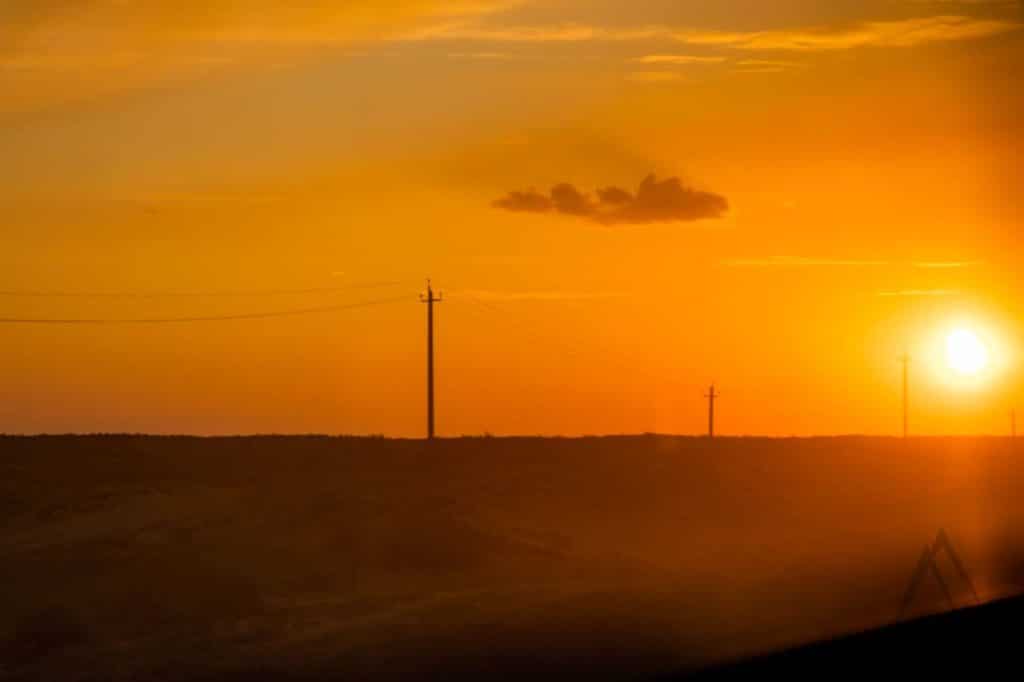
Climate of Kyzyl-Kum Desert
The climate in the Kyzylkum desert is sharply continental, with hot summers and relatively cold winters. The annual precipitation is low, from 100 mm to 200 mm, mostly taking place in winter and spring. Apart from the Janadarya river drying up in hot seasons, there is no other superficial watercourse in the whole desert but it contains large amounts of subterranean fresh water and oases as the area had more and larger rivers in the past.
Nature of Kyzylkum
Despite the scarcity of water, Kyzylkum desert boasts with diverse flora and fauna, which burst into life in spring time. The plant world is rich in ephemerals, including wild tulips and poppies growing richly across the whole desert area. The sedge (carex arenaria), the white saxaul (haloxylon persicum) and some species of Calligonum and Salsola richteri are common for the sandy areas, while various species of wormwood and shrubs are more typical of the clay soils. The valleys of dry river-beds are covered with forests of white and black saxauls.
Animals of Kyzylkum include specialties like the the desert monitor, which is a massive lizard that can grow up to the length of 1,6 meters. They are mostly active between May and July and might be aggressive. Sand cat is a feline that looks deceptively like a regular house cat, but is completely wild and the only wild cat that survives in Kyzyl Kum desert. It scurries across the desert during the night times, usually with its belly to the ground and can sprint very fast. There are also lots of tortoises found in Kyzyl Kum. Birdlife is also rich, especially in the hilly or mountainous areas.


Tours to Kyzyl-Kum Desert
Bactrian camels of Kyzyl Kum
It is believed that the Kyzyl kum is the most likely area of domestication of the two humped and large Bactrian camel (also called Mongolian camel). Even the scientific name of the animal speaks of his Central Asian origin, as in ancient times the area along the middle and upper reaches of Amu Darya were called Bactria and the petroglyphs in the Kyzyl Kum area have helped scientists to recover the history of domestication of camels.
Jeyran wild life reserve
The area of the Jeyran desert wild life reserve is about 16 500 hectares and the animals here are kept in semi closed fenced areas. The reason for the fencing is not to keep the animals at one place but more to keep the poachers out and the allow the protection of the animals inside it. During the creation of the Jeyran reserve, goitered gazelles were collected from the villages from local residents and in the expanses of the Kyzylkum desert. At the time, many families kept goitered gazelles as decoration or pets, like peacocks.
There are also many other rare mammals, birds, fish, insects and reptiles in Jeyran that are all native to the Kyzyl Kum desert. In the nursery of the Jeyran Ecocenter, which is located 42 kilometers from Bukhara, you can see long-spined hedgehogs, kulans, Przhevalsky horses, Bukhara mountain sheep, markhor goats, pink pelicans, herons, swans, eagles, falcons, gray monitor lizards and many other animals of the desert zone of Uzbekistan. There are also lakes on the territory of the reserve, which are replenished by the Amu-Bukhara canal.
